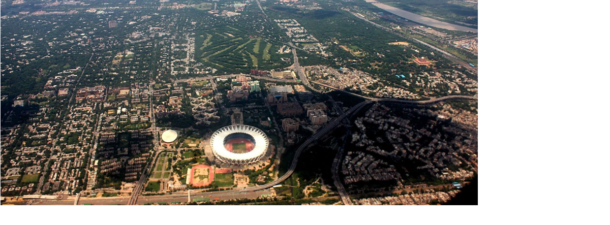
“How come the stubble burning in Punjab affects the Air Quality Index in Delhi but not in Chandigarh? One may argue that the number of cars is far less in Chandigarh as compared to Delhi, and same for the construction activity. However, its proximity to the stubble burning in Punjab and Haryana can’t be ignored.
Delhi and parts of the surrounding States of Punjab, Haryana and Uttar Pradesh again are facing a poor air quality issue. Air quality index has crossed dangerous levels in Delhi and as always the reasons are being attributed to the farm fire specially in the state of Punjab. One wonders why the farm fires of Punjab which is 250 to 500 kilometres away affect the region of Delhi and not from the Haryana and Uttar Pradesh when these two states are just next door to the capital region of India.
Through the years, there have been studies commissioned and executive action initiated to study, acknowledge and address the crisis. Months of October and November is the time when the southwest monsoon has receded in India; and with it, the great drafts in the upper atmosphere that normally flush out pollutants from the gamut of anthropogenic activities such as construction, driving, power generation and the burning of agricultural residue. In the real sense, the farm fires are a small contributors, where as other contributors in the form pollutants from industries, modes of transport and construction do make an impact. Concerning the diesel vehicles, the Delhi government has taken ample steps and have delivered results. Construction and industries are economic life and any major action on these can affect the economics of inflow.
Also, the Commission for Air Quality Management (CAQM), which is tasked with addressing the causes of air pollution in Delhi and the adjoining States, is now a body packed with expertise but whose powers are limited to evoking and recommending grades of measures depending on the degree of deterioration in air quality. While the CAQM pointed out, as recently as October 31, that the daily average air quality in Delhi from January to October of this year was the best in the last six years, it elides the fact that the number of days in November when air quality becomes ‘severe’ (over 450 AQI) has remained roughly the same. Thus, in 2022, the AQI was in the severe category in the first fortnight of November for three days, the same as in 2021, 2020 and 2019. While there is greater awareness and action to curb the sources of pollution, November, which has in recent years emerged as the critical month for pollution, remains to be tamed.
Incidents of stubble burning in Punjab, Haryana and Uttar Pradesh this year have been roughly half that when compared to previous years. While the measures earlier have seen an institutionalised response to tackle air pollution, it is now time for a concerted approach to address these challenges of November.
However, a check at the AQI Delhi and Chandigarh on the same time give revealing results, shown in the infographics. How come the stubble burning in Punjab affects the Air Quality Index in Delhi but not in Chandigarh? One may argue that the number of cars is far less in Chandigarh as compared to Delhi, and same for the construction activity. However, its proximity to the stubble burning in Punjab and Haryana can’t be ignored. Just like Delhi, half of Chandigarh’s daily traffic originates outside the city. Going by that logic, this state capital should be experiencing more challenges in Air Quality Index than Delhi. But the residents in Chandigarh enjoy a much better winter but for few days of bad Air Quality Index. One area where this region and other areas in Punjab score over all others is the greenery and the way the resident tend to preserve their green cover. Where as Delhi and the surrounding areas have not been able to so.
Hence, stubble burning not doubt is one of the reason for the poor air quality in Delhi, but not the prime reason to call for stopping of the cultivation of rice. With ample steps being taken by both Haryana and Punjab government to stop the burning of stubble and providing alternative use of stubble, they are hopes for some improvement in years to come.
Nevertheless, beyond stubble burning, this means addressing the more daunting challenges of vehicular pollution and construction dust. While urban Delhi could have always blamed the distant farm fires for the pollution crisis, inconvenience. Bodies such as the CAQM have to assert their independent credentials and ensure greater coordination and compliance within Delhi and the surrounding States to address the challenge.







No Comments
Comments for Is stubble burning the real cause of poor air quality in Delhi? are now closed.